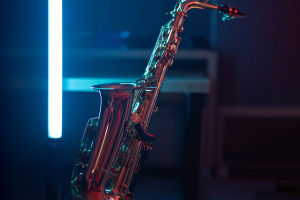Photography isn't just about pointing and clicking—it's about understanding how light interacts with your camera and scene. And at the heart of that understanding lies something every great photographer knows: the exposure triangle.
This trio—ISO, shutter speed, and aperture—might sound technical at first, but mastering them can transform your photos.
In this guide, we're breaking down each part of the exposure triangle in a way that makes sense and sticks.
Whether you're snapping travel memories, cultural moments, or everyday life, these tips will help you capture them just the way you imagined.
Getting to Know the Exposure Triangle
Think of the exposure triangle as three friends working together to control the light in your photos. Each one plays a unique role, and once you learn how they interact, you'll have the power to adjust your camera like a pro—even in tricky lighting.
ISO: The Light Sensitivity Slider
ISO controls how sensitive your camera is to light. A lower ISO (like 100 or 200) means less sensitivity, which is great for bright daylight and gives you clean, sharp images. A higher ISO (like 1600 or more) is useful in low light but can bring some grain, or "noise," into your photo.
Start by keeping ISO low when there's plenty of light. When the sun goes down or you're indoors, bump it up just enough to get the shot. The trick is finding the sweet spot—bright enough without losing too much detail.
Shutter Speed: Freezing or Blurring Motion
Shutter speed is how long your camera's shutter stays open. A fast shutter speed (like 1/1000) freezes motion—perfect for action shots, sports, or that playful jump in front of a landmark. A slower speed (like 1/10 or even 1 second) creates motion blur, which can be magical when used right, like for waterfalls or night scenes.
You'll want to use a tripod or steady surface for slow shutter shots to avoid accidental blur. And if you're traveling and capturing local performances or dances, adjusting your shutter speed can bring out movement beautifully.
Aperture: Depth and Drama
Aperture is the opening inside your lens. A wide aperture (like f/1.8) lets in more light and gives you a blurry background—great for portraits or food photography. A narrow aperture (like f/11 or f/16) keeps more of your scene in focus, perfect for landscapes or group shots.
If you're wandering through historic sites or capturing stunning architecture, using a smaller aperture helps everything stay sharp from front to back. Want that dreamy background fade? Go wide. Just remember: the lower the number, the wider the opening.
Balancing the Triangle in Real Life
Now that you know each part, it's time to bring them together. The key is balance. Changing one element usually means adjusting another to keep your exposure right. Here's how you can mix and match them smoothly, based on what kind of photo you're after.
Start with Your Goal in Mind
Ask yourself: What matters most in this shot? Do you want to freeze motion, get everything in focus, or blur the background? Once you've picked your priority, adjust that setting first. Then tweak the others to balance the exposure. For example, if you want a portrait with a blurred background, use a wide aperture.
Then, set a shutter speed fast enough to avoid shake, and adjust ISO to get the light just right. You're in control—use that to your creative advantage.
Use Practice Shots as Learning Tools
Don't wait for a perfect moment to experiment. Try test shots in different lighting: golden hour, indoor cafés, bustling street scenes. Play with settings and check the results. Over time, you'll start to see patterns and understand what works best in different conditions.
Make mistakes—they're the best teachers. You'll quickly learn how to spot when a photo is overexposed, underexposed, or just right.
Trust Your Eyes, Not Just Numbers
While the numbers matter, the real test is how your image feels. Does it capture the mood you were going for? Does the lighting match the story? Photography blends technique and creativity—use both. And when you find that balance, the results are magic.
The exposure triangle isn't just a technical concept—it's your toolkit for creative freedom. Once you understand ISO, shutter speed, and aperture, you can play with light, motion, and depth in ways that tell your story with clarity and style.
So go out, experiment, and shoot with curiosity. Whether you're exploring new cultures, snapping spontaneous street scenes, or documenting quiet moments, your photos will carry not just images—but emotion, energy, and intention.
That's the power of mastering the light game.


